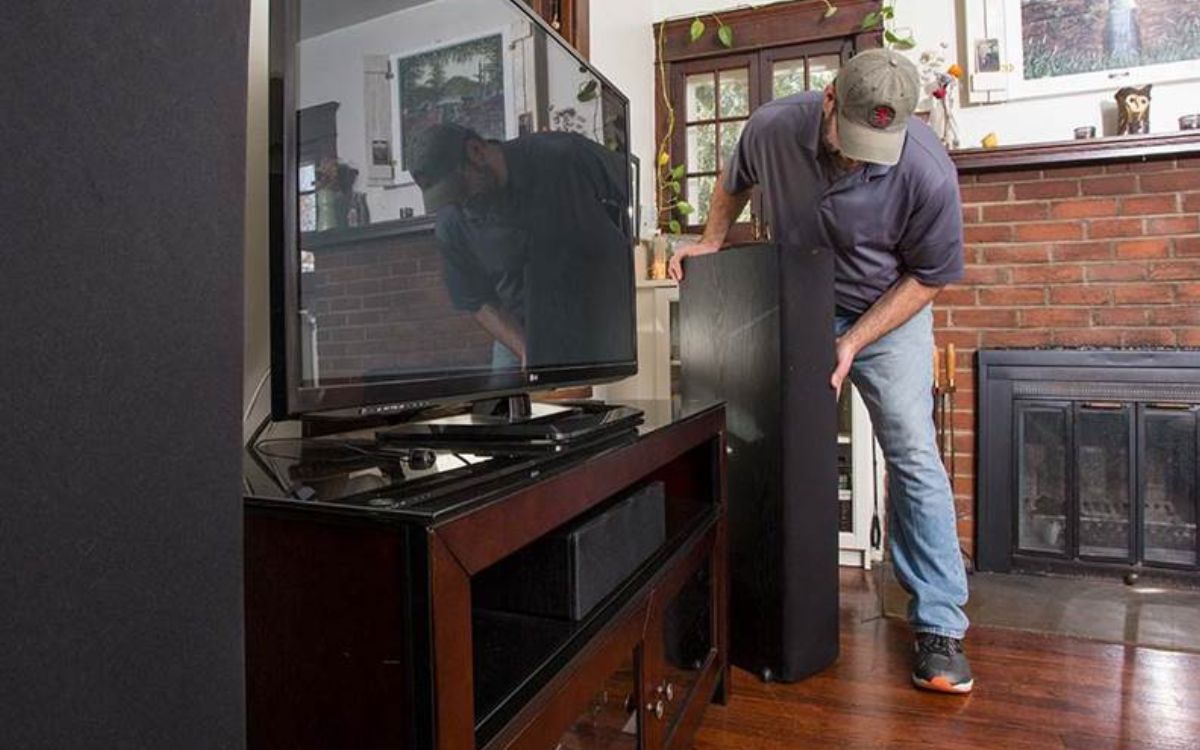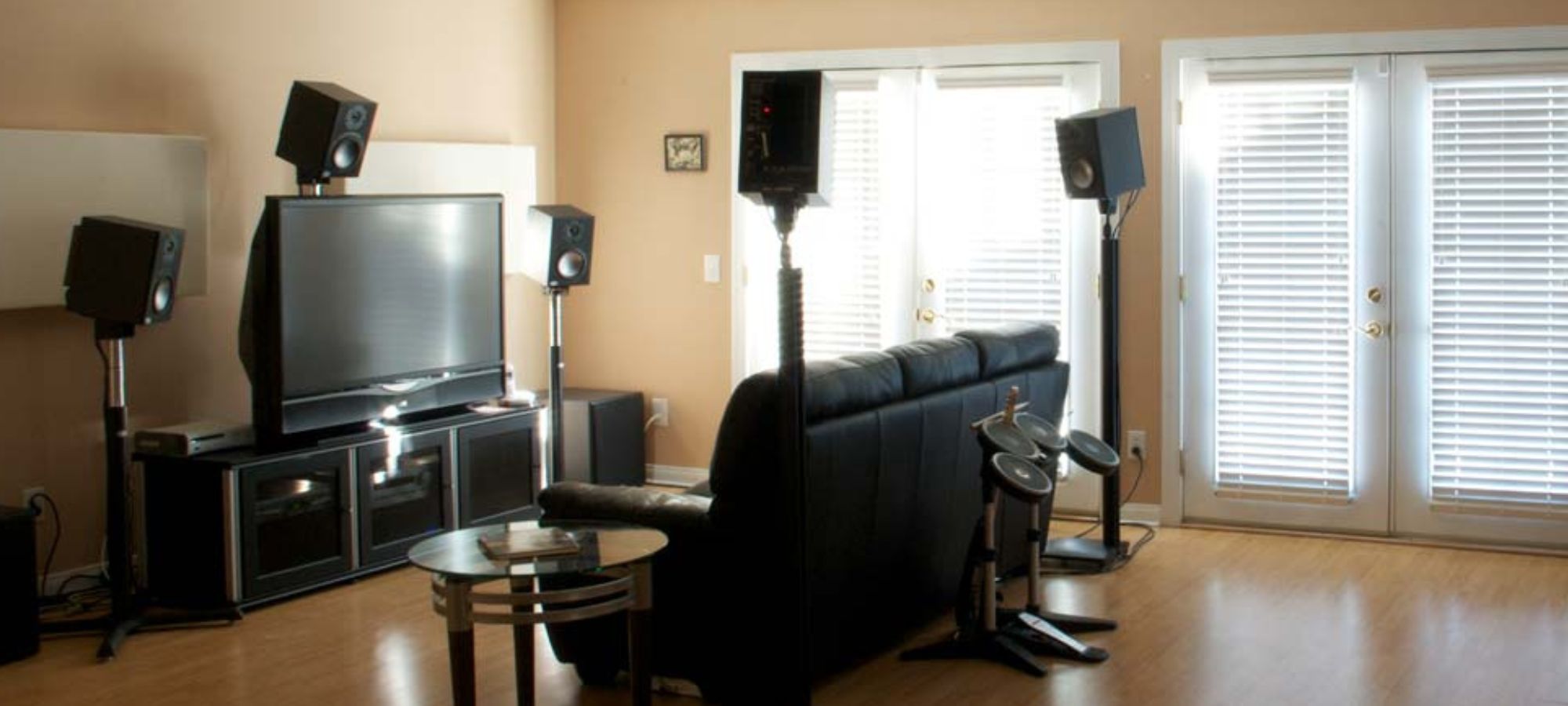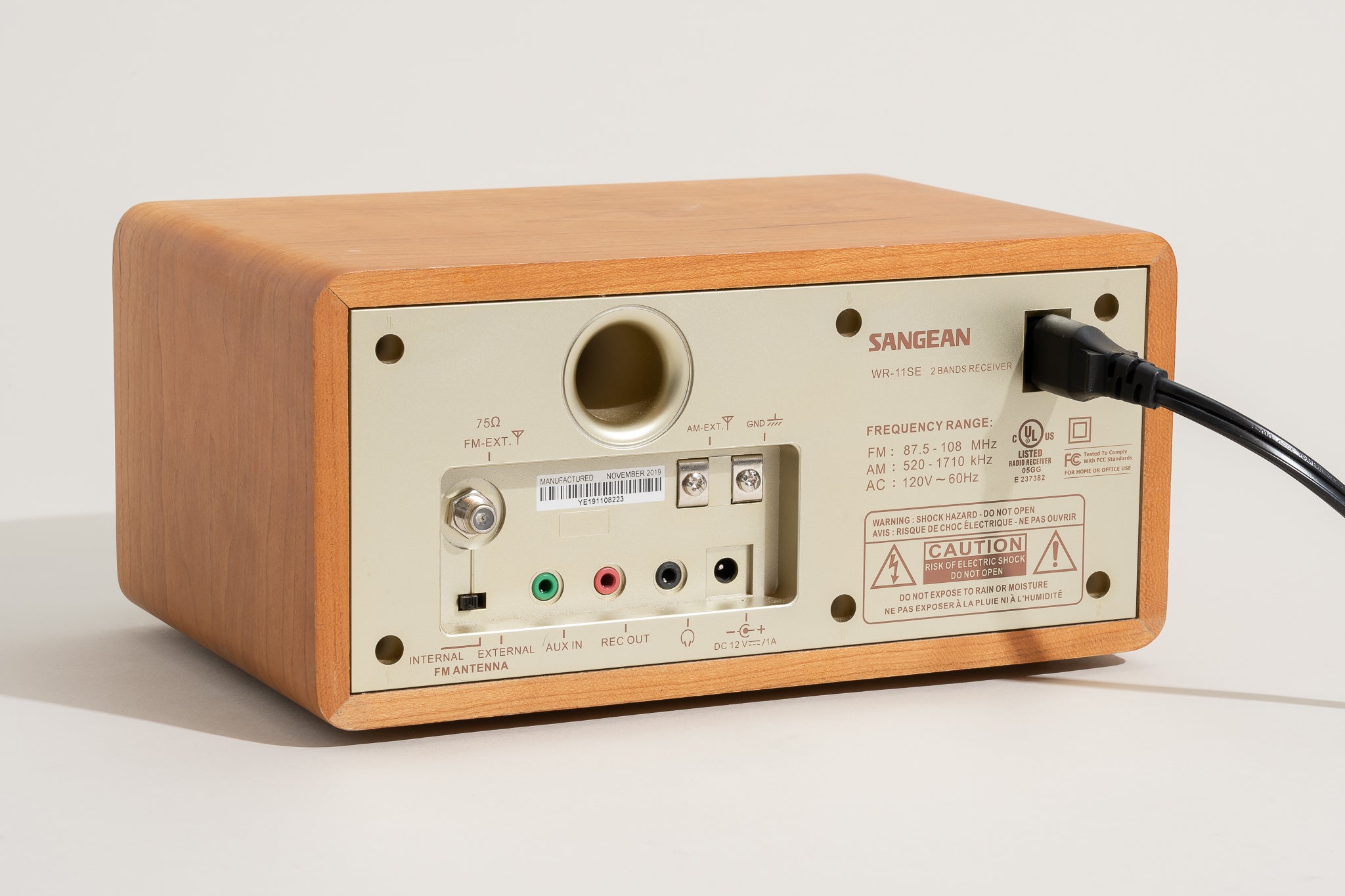Home>Production & Technology>Surround Sound>Why Does Surround Sound Sound Bad


Surround Sound
Why Does Surround Sound Sound Bad
Modified: February 17, 2024
Discover why surround sound sometimes sounds bad and how to improve your audio experience. Find out the factors affecting surround sound quality and troubleshooting tips.
(Many of the links in this article redirect to a specific reviewed product. Your purchase of these products through affiliate links helps to generate commission for AudioLover.com, at no extra cost. Learn more)
Table of Contents
Introduction
Surround sound has revolutionized the way we experience audio in our homes. By utilizing multiple speakers placed strategically around the room, surround sound systems create a more immersive and realistic audio experience. From watching movies to playing video games, surround sound brings a new level of depth and excitement to our entertainment. However, it’s not always smooth sailing when it comes to surround sound. There are times when the sound quality may not be as impressive as expected, leaving us wondering why surround sound can sometimes sound bad.
In this article, we will explore the common issues that can affect the quality of surround sound and offer insights into how to overcome them. Whether you’re a movie buff, a music lover, or a gaming enthusiast, understanding the factors that can impact surround sound will help you maximize your audio experience.
From room acoustics to speaker placement, amplifier and receiver settings to audio compression and format issues, we will delve into the various aspects that can contribute to subpar surround sound. By identifying these factors and learning how to address them, you can enhance the audio performance of your surround sound system and unlock its full potential.
So, if you’ve ever wondered why your surround sound system falls short of delivering the mesmerizing audio experience you expected, join us as we uncover the reasons behind it and provide valuable tips to improve the sound quality. Let’s dive in!
The Basics of Surround Sound
Before we dive into the reasons why surround sound can sometimes sound bad, let’s first understand the fundamentals of surround sound technology. Surround sound systems are designed to replicate the multi-dimensional audio experience we encounter in real-life environments. By using multiple speakers placed strategically around the room, surround sound systems create an immersive soundstage that surrounds the listener.
The most common surround sound setups are 5.1 and 7.1 systems, consisting of five or seven satellite speakers and a subwoofer. The “5” or “7” represents the number of satellite speakers, while the “.1” signifies the presence of a dedicated low-frequency effects (LFE) channel handled by the subwoofer. The satellite speakers are typically placed around the room in specific locations to ensure the optimal distribution of sound.
In a 5.1 setup, the front left, center, and front right speakers handle the dialogue and most of the sound effects. The rear left and rear right speakers provide surround sound effects, immersing the listener in a three-dimensional audio environment. The subwoofer enhances the low-frequency effects, adding depth and impact to explosions and other bass-heavy sounds.
In a 7.1 setup, two additional speakers are added to the system. These speakers, known as side surround speakers, are placed between the front and rear speakers, further enhancing the surround sound experience.
To fully enjoy the benefits of surround sound, it’s important to ensure that the audio source, such as a movie or game, is encoded in a surround sound format, such as Dolby Digital or DTS. These formats are designed to deliver multi-channel audio, taking advantage of the multiple speakers in a surround sound system.
Overall, surround sound technology provides a more immersive and realistic audio experience. However, despite its potential, there are several factors that can affect the quality of surround sound. In the following sections, we will explore these factors in more detail and provide tips to overcome common issues.
Common Issues with Surround Sound
While surround sound systems are capable of delivering breathtaking audio experiences, there are several common issues that can arise and negatively impact the sound quality. Here are some of the most frequently encountered problems:
- Imbalanced Speaker Levels: One common issue is imbalanced speaker levels, where certain speakers are louder or softer than others. This can result in an uneven distribution of sound and a lack of coherence in the audio playback. Adjusting the speaker levels through the receiver’s settings or using a sound level meter can help achieve a more balanced sound.
- Inadequate Speaker Placement: The placement of speakers plays a crucial role in surround sound performance. If the speakers are not positioned correctly, it can lead to muffled or distorted sound. Improper speaker placement can also cause a weak surround sound effect or a lack of immersiveness. It’s important to consult the speaker manufacturer’s guidelines or seek professional advice when positioning the speakers to optimize sound quality.
- Poor Room Acoustics: The acoustic properties of the room can greatly influence the overall sound quality. Hard surfaces, such as bare walls and floors, can result in sound reflections and echo, causing a loss of clarity and precision in audio playback. Adding acoustic treatments, such as carpets, curtains, or acoustic panels, can help absorb reflections and improve the sound quality in the room.
- Improper Amplifier and Receiver Settings: Incorrect settings on the amplifier or receiver can severely impact the sound quality. Issues such as incorrect audio mode selection, improper crossover settings, or incorrect speaker size settings can result in distorted sound, reduced dynamics, or insufficient bass output. Consulting the user manual or seeking professional calibration can help optimize amplifier and receiver settings for the best audio performance.
- Audio Compression and Format Issues: In some cases, the source material itself may be the cause of poor sound quality. Audio files with high compression or low-bitrate streaming services can result in degraded audio, noticeable artifacts, or loss of detail. Whenever possible, aim to use high-quality audio sources and formats to ensure the best sound experience.
Identifying and addressing these common issues can greatly improve the sound quality of your surround sound system. In the following sections, we will explore additional factors, such as room acoustics, speaker placement, amplifier settings, and speaker quality, that can contribute to subpar audio performance and provide tips on how to overcome them.
Room Acoustics and Surround Sound
The room in which your surround sound system is set up plays a significant role in the overall sound quality. The acoustics of the room can greatly impact how sound waves travel, reflect, and interact with the environment. Understanding the basics of room acoustics can help you optimize the performance of your surround sound system.
One of the key factors to consider is the presence of hard surfaces in the room, such as bare walls, floors, and ceilings. These surfaces can cause sound reflections and echo, resulting in a loss of clarity and muddiness in the audio playback. To improve the acoustics of the room, you can introduce soft materials that absorb sound, such as carpets, curtains, or acoustic panels. These materials help reduce reflections and improve the overall sound quality.
Another important consideration is the size and shape of the room. Larger rooms tend to have more challenging acoustics, as sound waves have more space to travel and interact. Additionally, irregularly shaped rooms can cause sound to bounce unpredictably, leading to uneven sound distribution. In such cases, using room correction software or seeking professional advice can help overcome these challenges and optimize the sound quality.
It’s also worth noting the location of the listening position within the room. Ideally, the listening position should be placed away from walls and corners to minimize the effects of boundary reflections. Placing bass traps in the corners can help reduce bass build-up and improve sound balance. Additionally, ensuring that there is enough space between the speakers and the listening position can enhance stereo imaging and create a more immersive surround sound experience.
Lastly, consider the ambient noise levels in the room. Excessive background noise from sources like air conditioning units, fans, or street noise can affect the perceived quality of surround sound. Minimizing background noise by using soundproofing techniques or opting for quieter audio equipment can contribute to a more enjoyable and immersive audio experience.
By addressing room acoustic issues such as reflections, echo, and excessive background noise, you can significantly improve the quality of sound reproduction in your surround sound system. Next, we will explore another crucial aspect of achieving optimal sound performance – speaker placement.
Speaker Placement
The placement of speakers in your surround sound system is paramount to achieving an immersive and balanced audio experience. Proper speaker placement ensures that sound is evenly distributed and that the surround sound effects are accurately reproduced. Here are some key considerations for speaker placement:
1. Front Speakers: In a typical surround sound setup, the front speakers (front left, center, and front right) handle the majority of dialogue and sound effects. These speakers should be placed at ear level and equidistant from the main listening position. The center speaker, in particular, should be positioned directly above or below the display screen for optimal dialogue clarity.
2. Rear Speakers: The rear speakers (rear left and rear right) are responsible for creating surround sound effects and immersing the listener in a three-dimensional audio environment. Ideally, these speakers should be placed slightly behind the main listening position and elevated slightly above ear level. This placement helps to create a sense of spaciousness and enhances the surround sound experience.
3. Subwoofer: The subwoofer handles the low-frequency effects (LFE) channel, providing deep, impactful bass. The subwoofer’s placement is less critical compared to the other speakers. However, placing it near a wall or in a corner can help enhance bass response. Experimenting with subwoofer placement within the room can help achieve the desired bass performance.
4. Side Surround Speakers (7.1 Setup): In a 7.1 surround sound setup, side surround speakers are added to the system. These speakers are positioned between the front and rear speakers, aiming to create a more enveloping soundstage. Side surround speakers should be placed at ear level and equidistant from the main listening position.
5. Speaker Angles: Angle the front speakers slightly inward towards the main listening position, known as toe-in. This arrangement helps improve stereo imaging and creates a wider soundstage. Experimenting with the angle of the rear and side surround speakers can also enhance the surround sound effects.
Keep in mind that the room’s layout, furniture placement, and other room features can influence speaker placement. It’s important to refer to the speaker manufacturer’s guidelines and recommendations for optimal placement. Additionally, using a sound level meter or conducting manual tests can help fine-tune the speaker positions and achieve the best audio balance.
Proper speaker placement is crucial for ensuring accurate sound reproduction and a captivating surround sound experience. In the next section, we will explore amplifier and receiver settings to further optimize your surround sound system.
Amplifier and Receiver Settings
The amplifier and receiver settings play a vital role in the overall performance and sound quality of your surround sound system. Correctly configuring these settings ensures that you maximize the capabilities of your speakers and achieve the best possible audio experience. Here are some key settings to consider:
1. Audio Mode and Channel Configuration: Selecting the appropriate audio mode and channel configuration is essential for optimizing surround sound. Most receivers provide various audio modes, such as Dolby Digital, DTS, or Stereo. Ensure that the audio mode matches the source material to take advantage of the available channels and audio effects.
2. Crossover Settings: The crossover setting determines the frequency at which the subwoofer takes over the bass reproduction from the main speakers. Setting the crossover too low can result in muffled or boomy bass, while setting it too high can cause a lack of bass. Adjust the crossover setting to find the sweet spot where the subwoofer seamlessly integrates with the main speakers.
3. Speaker Size and Distance: Configuring the speaker size and distance settings in your receiver ensures accurate sound reproduction. Specify the size of each speaker in your system as either “small” or “large.” This setting determines how the receiver distributes bass frequencies to the speakers. Additionally, inputting the distance from each speaker to the main listening position allows the receiver to achieve proper time alignment and deliver an optimized surround sound experience.
4. Volume Levels and Sound Calibration: Calibrating the volume levels of each speaker ensures a balanced soundstage. Most receivers offer a built-in sound calibration feature that uses a test tone and microphone to measure the speaker levels and adjust them automatically. Alternatively, you can manually adjust the speaker levels to achieve a balanced sound by using a sound level meter or relying on your ears.
5. Dynamic Range Compression: Some receivers provide dynamic range compression settings that compress the difference between the softest and loudest sounds. This feature can be helpful when watching movies late at night or when the audio content has a wide dynamic range. Experiment with different settings to find the balance that suits your listening preferences.
Consulting the user manual of your receiver is essential to understand the specific settings and options available. Additionally, consider seeking professional calibration services for advanced setup and fine-tuning of your surround sound system.
By correctly configuring the amplifier and receiver settings, you can unleash the full potential of your surround sound system and enjoy a powerful and immersive audio experience. Next, we will explore the impact of audio compression and format issues on surround sound quality.
Audio Compression and Format Issues
When it comes to surround sound, the audio compression and format of the source material can significantly impact sound quality. Audio compression is the process of reducing the size of audio files, often used in streaming services or to fit more content on a disc. While compression is necessary for efficient storage and transmission, it can lead to a loss of audio quality. Here are some common audio compression and format issues to be aware of:
1. Low Bitrate Streaming: Streaming services often use low bitrates to conserve bandwidth, resulting in compressed audio. This can lead to a reduction in audio detail and dynamic range. If you notice a significant decrease in sound quality, consider opting for higher-quality streaming options when available or choose physical media with less compressed audio.
2. Lossy Compression Formats: Lossy compression formats, such as MP3 or AAC, discard certain audio data to reduce file size. While these formats are widely compatible and convenient, they sacrifice some audio fidelity. If possible, consider using lossless formats, such as WAV or FLAC, to preserve more of the original audio quality.
3. Overcompressed Music: Some commercial recordings and streaming services apply heavy compression during the mastering process to make the audio sound louder. While this can make music more impactful, it often sacrifices the dynamic range, resulting in a loss of audio nuance and detail. When possible, seek out recordings and services with less aggressive compression to preserve dynamic range and enjoy a more natural sound.
4. Incompatible Audio Formats: Ensure that your surround sound system supports the audio formats of your source material. For example, if you’re playing a Blu-ray disc with Dolby TrueHD or DTS-HD Master Audio encoding, make sure your receiver is capable of decoding those formats to fully enjoy the high-quality audio. Using incompatible formats or downsampling audio may result in a noticeable deterioration of sound quality.
When encountering audio compression and format issues, consider exploring other sources or platforms that prioritize audio quality. Additionally, investing in high-resolution audio files or physical media with less compression can offer a noticeable improvement in sound reproduction.
Understanding audio compression and format issues allows you to make informed choices and seek out high-quality audio sources, enhancing your surround sound experience. In the next section, we will explore the role of speaker quality and system calibration in achieving optimal sound performance.
Speaker Quality and System Calibration
When it comes to surround sound, the quality of your speakers and the calibration of your system can make a significant difference in the overall audio experience. Here are two crucial factors to consider: speaker quality and system calibration.
1. Speaker Quality: The quality of your speakers directly impacts the sound reproduction of your surround sound system. Investing in high-quality speakers that are designed specifically for surround sound can result in clearer, more detailed audio. Well-built speakers with robust construction and accurate frequency response can deliver a more realistic and immersive soundstage. Consider researching reputable speaker brands and reading reviews to make an informed choice that matches your budget and audio preferences.
2. System Calibration: Calibration is the process of fine-tuning your surround sound system to achieve optimal audio performance. Most modern AV receivers have built-in calibration systems that use a microphone to analyze the room’s acoustics and automatically configure speaker levels, delay settings, and equalization to accommodate the unique characteristics of your listening area. Manual calibration methods, such as using a sound level meter and adjusting speaker distances and levels, can also be used for precise customization. Calibration helps ensure that audio is accurately reproduced in your specific listening environment, resulting in a more balanced and immersive sound experience.
Additionally, consider exploring advanced calibration options, such as room correction software or professional calibration services. These can further refine your system’s performance by compensating for room acoustics, speaker characteristics, and other variables that affect sound quality. Professional calibration services often utilize specialized audio equipment to fine-tune your system and maximize its potential, resulting in even better audio fidelity.
It’s important to note that even with the best speakers and calibration, personal preferences can play a significant role. Experimenting with speaker placement, calibration settings, and equalization options can help you tailor the audio to your liking and create a listening experience that suits your preferences.
By investing in quality speakers and thoroughly calibrating your surround sound system, you can achieve exceptional sound reproduction and fully immerse yourself in the audio content. In the next section, we will wrap up our discussion and provide a summary of the key takeaways.
Conclusion
Surround sound technology has transformed the way we experience audio in our homes, providing a more immersive and realistic soundstage. However, there are several factors that can affect the quality of surround sound and leave us wondering why it sometimes sounds bad. By understanding these factors and implementing the necessary adjustments, we can optimize our surround sound systems and elevate our audio experiences.
Issues such as imbalanced speaker levels, poor speaker placement, inadequate room acoustics, incorrect amplifier and receiver settings, and audio compression and format problems can all contribute to subpar surround sound. However, through proper speaker placement, consideration of room acoustics, fine-tuning amplifier and receiver settings, addressing audio compression and format issues, and choosing high-quality speakers, we can overcome these challenges and enhance the sound quality of our surround sound systems.
Furthermore, calibrating our surround sound systems and considering advanced calibration options can provide even greater audio fidelity and customization to suit our preferences. By taking the time to experiment and optimize the settings, we can achieve a balanced and immersive sound experience that truly brings our movies, music, and games to life.
Remember to prioritize high-quality audio sources, consider upgrading to lossless formats when possible, and seek out platforms that prioritize audio quality. These choices will ensure that we are maximizing the potential of our surround sound systems and enjoying the best audio experience available.
In conclusion, understanding the basics of surround sound technology, addressing common issues, optimizing speaker placement, configuring amplifier and receiver settings, and considering speaker quality and system calibration are all vital steps in improving the sound quality of our surround sound systems. With these considerations in mind, we can fully immerse ourselves in the captivating audio experiences that surround sound has to offer.











